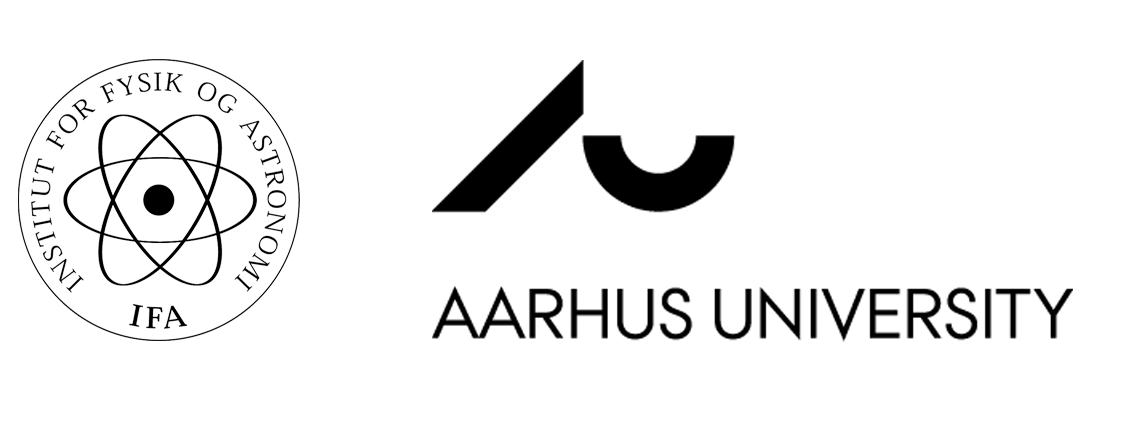Find all the exciting quantum tools on our Quantum page!
The Quantum Physics Research and Education tools are developed to both support and give access to the research conducted in the Quantum Measurement and Manipulation Group at the Department of Physics and Astronomy, Aarhus University. The group has both a theoretical and an experimental division. The main themes of research are briefly described below.
The main objectives of the Department are to carry out research at the highest international level, to offer research-based teaching at Bachelor of Science, Master of Science and Ph.D. levels and to exchange knowledge with other areas of society.
Please also explore our Quatomic.com website for more information about our numerical quantum tools.
Quantum
computation
Quantum particles have two distinct features: They can exist in only a discrete number of energy states, and they can exist in a superposition of several of these simultaneously! This means that the number of collective states of an ensemble of such atoms grows exponentially with the number of atoms, which has two dramatic consequences.
First, utilising particles which can exist in two levels simultaneously (quantum bits, or qubits), a quantum computer can be constructed with potentially more computational power than all regular computers in the world combined. Secondly, any naturally occurring material with properties determined by the quantumness of its constituents cannot possibly be simulated on classical computer because they cannot encode the complexity. In modern materials design, such problems are abundant. The most prominent one is high temperature superconductivity, which could potentially revolutionise the global energy sector, but are currently not well understood.
An alternative to conventional computer simulations consist of a quantum simulator: a quantum system with sufficient flexibility to mimic the dynamics of the target problem and thereby let the quantum dynamics find the answer by itself. Both quantum computers and simulators have already been implemented in small scale in atomic, ionic, photonic, and electrical systems. The so-far unsolved challenge has been to find architectures which allow a scaling up of the system to generate truly useful computation power. Our approach is based on so-called optical lattices - artificial crystals of light - in which atoms can be arranged like eggs in an egg-carton and therefore has a natural built-in scaling to hundreds or even thousands of atoms.
Quantum
control and
optimization
In any practical realization of quantum physics experiments noise from the environment couples to the atomic system after a certain time-scale and thereby destroys the usefulness of the system. The standard response is to speed up operations, e.g., of gates in a quantum computer, as much as possible. In our group we have studied modern optimization algorithms to find such fast solutions for the dynamics and also created the online computer game, Quantum Moves, to allow players to participate in the search for solutions. This work is of course of practical interest for the realization of e.g. quantum computers, but also of fundamental physical interest because of the postulate that there exists a minimum duration for any quantum operation—the Quantum Speed Limit (QSL). The QSL cannot be analytically calculated for complicated dynamics so researchers need to rely on numerical methods.
In our group we also examine the quantum engineering of more complex systems such as Schrödinger cat states, which are macroscopic superposition states carrying a high amount of quantumness (entanglement). This makes them excellent resource states for various quantum technologies such as quantum computing, quantum communication and cryptography, and quantum enhanced sensing of e.g. time, displacement, rotation, and acceleration.
Quantum
measurement
One of the most fundamental concepts of quantum physics, as introduced by Niels Bohr and coworkers in Copenhagen in the early 19th century, is the dramatic role of the observer. Whenever a quantum system is observed, it is automatically perturbed. While the philosophical implications of this concept are still hotly debated, in practice this forms the basis of e.g. the absolute security quantum cryptography, which cannot even be decrypted by the powerful quantum computers. In our group we ask fundamental questions concerning the trade-off between how much information can be gained about a quantum system while leaving it largely unperturbed using so-called Quantum-non-demolition (QND) measurements. We both implement these experimentally on the ultra-cold atoms and numerically simulate the effect on computers.
Our aim is to explore novel ways of using the dramatic effect of measurements to steer the dynamics into desired states which can otherwise be difficult to realise. One such example is the development of novel quantum materials with real-world practical properties. All materials are characterised by its phase diagram; the state-of-matter (such as classically solid, liquid, and vapour but in the quantum realm also e.g. superconductivity) at various system parameter (such as pressure, volume, and temperature). In real world materials the parameter regime in which useful properties appear may be extremely limited or often simply non-existent. We believe that the power of quantum measurements may allow for stretching of existing miniature regimes of useful properties and even create custom made quantum materials exhibiting completely new combinations of properties.

